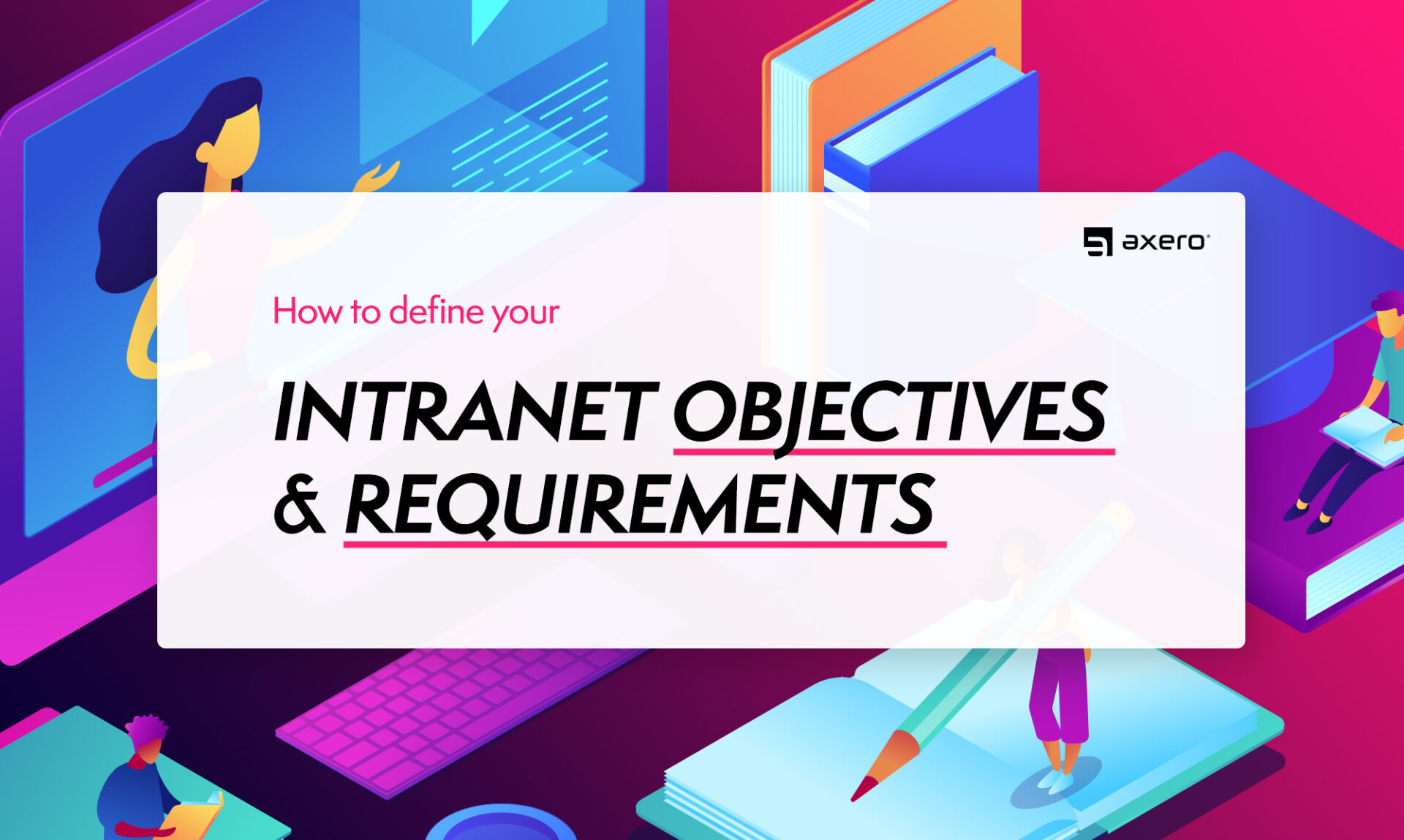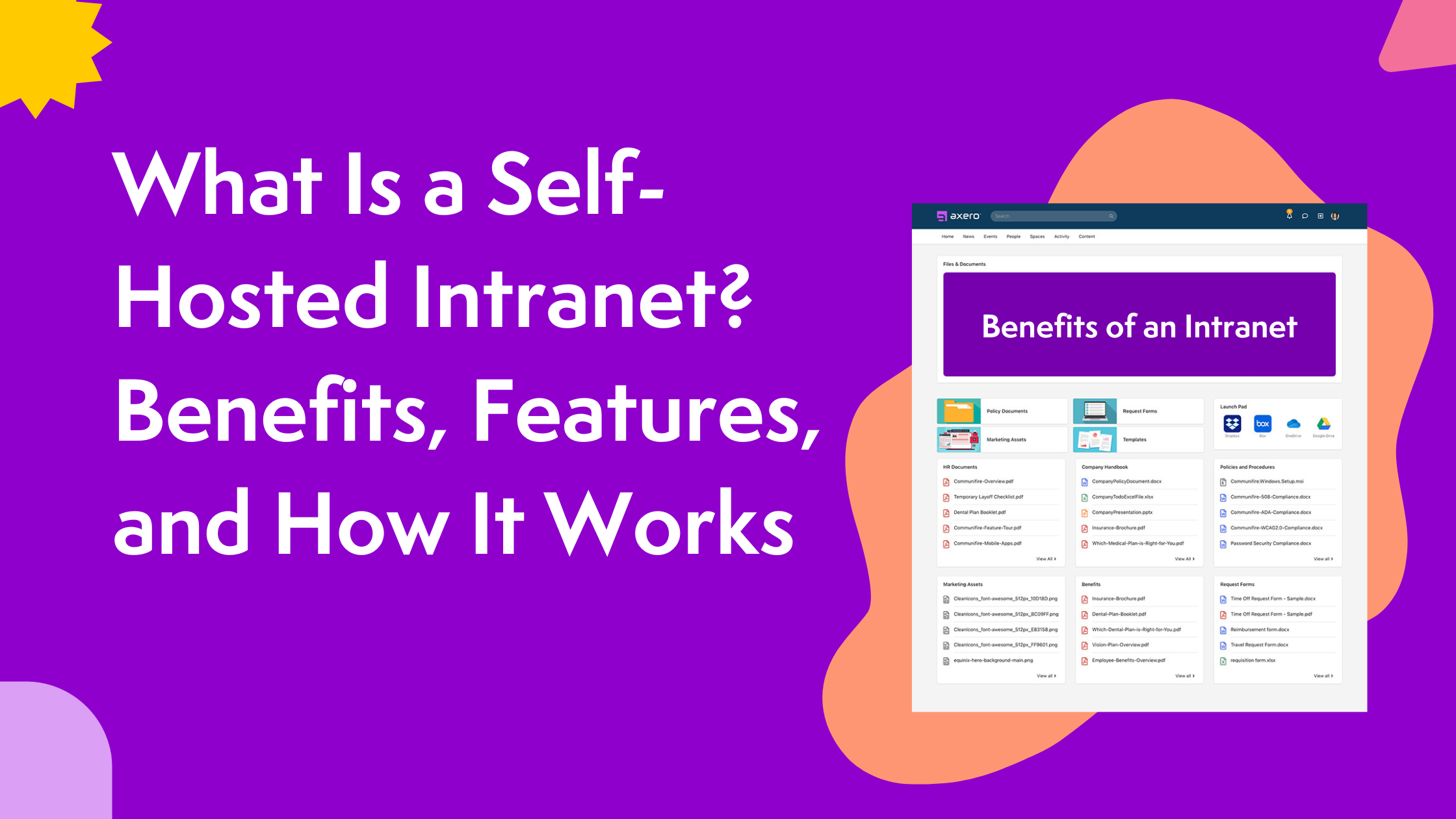Your company intranet is one of your organization’s most important assets and investments. It will lay the foundation for how internal communication, innovation, collaboration, information sharing, and growth takes place from within.
It is therefore necessary, even critical, to ensure your intranet objectives and requirements are in line with your present and future goals.
Before You Define your Objectives, Define your Intranet Goals
Defining intranet goals involves identifying the specific outcomes and objectives you want to achieve through the implementation of your intranet platform. A few things to look at when setting intranet goals are:
- Understanding your organization’s needs
- Involve other teams to what’s required
- Prioritise goals and needs
- make goals SMART
- Align with employee needs and balance with organisation needs.
Once you have goals that the organisation can agree on
Let’s look at a few steps that you need to take during this process:
1. Start by understanding your Organizations Needs
Gaining a deep understanding of your organization’s needs is the initial and crucial step in developing a successful intranet strategy. This process involves identifying the specific challenges and requirements that your company faces.
Organizational needs encompass a wide range of areas that demand attention and improvement. These could include issues such as ineffective communication, inefficient information sharing, disjointed collaboration between departments, difficulty in accessing essential resources, outdated workflows, and the need for streamlined processes.
By comprehensively understanding your organization’s needs, you lay the groundwork for a company intranet solution that is tailored to address these specific pain points.
2. When Setting Objective, Involve Stakeholders
Your stakeholders are the people within the organization who will be using the intranet software. They include departmental leaders, external partners, and frontline workers.
Spend time with them to discuss pain points they experience today that limits what they can do and to what extent. Involving your stakeholders helps you understand what roadblocks limits productivity and ensures that you solve real business problems and meet your users’ everyday needs, rather than blindly adopting an intranet solution because you know you need to.
3. Identify your intranet context requirements.
Beyond getting the stakeholders’ opinions, you need to go further and breakdown specific intranet requirements. The more granular you can go, the better the chances that you are going to select the right intranet solution.
Ask yourself:
- Who is the user of the intranet?
- What do they want?
- Why do they want it?
The whos and the whys form the context of your requirements. These not only help you drill down to specifics, but they also allow vendors to recommend intranet solutions that may accomplish your goals.
4. Conduct interviews to Understand Department and Employee Needs.
Interviews will help you get as many people as possible involved in the decision making process. You may want to have your intranet objectives written down.
Some of your intranet objectives and requirements may include:
- Improving information and document search capabilities
- Document management, knowledge management, and content management
- Improving employee engagement
- Ensuring employees receive important company information
- Ensuring company information access from home and on mobile devices
- Reduced time spent searching for information (implementing AI knowledge management can help with this)
- Reduce time spent in email
- Provide easier ways of managing remote employees
- Fix technical issues like broken search and slow speeds
- Manage calendars, events, meetings, and important dates
- Task management and project collaboration
- Team collaboration within departments and across the company
5. Assemble your Intranet Team.
Typically, the decisions about your organization’s intranet solution cannot be made by one person alone. You need a team that is able to get things done, committed to your intranet objectives and requirements, and is small enough to act with efficiency.
In order to do this, determine the following:
- Who is responsible? – The person assigned to do the work
- Who is accountable? – The final decision maker who has ultimate ownership
- Who is consulted? – The person to be consulted before the final decision is taken
- Who is informed? – The person who needs to be know that a decision has been made
6. Define your business constraints.
Every business is constrained by the three cardinal factors:
scope – cost – schedule
Influencing one will automatically influence the others.
For example, if you want to cut down on cost, then you will have to sacrifice some requirements or decrease the scope. Your schedule will also affect both the cost and scope of what can be done within a set duration. Likewise, influencing your scope no doubt affects the cost and the schedule or time it takes to integrate your requirements.
Other constraints may come into play too, including geography, languages, IT, and HR. Determining what you need and what you can forfeit is critical, especially if you are working on a schedule and on a budget. For small and medium-sized businesses, this is likely going to influence the final decision. Consider the following:
Build or buy?
The bigger your company, the more sense it might make to build. Keep in mind that the amount of time and resources to build an intranet is huge and could be very costly in the long run. Most will buy a platform. In this case you have to determine if you’d rather have customizable and flexible intranet software … or a one-size-fits-all intranet.
Self-hosted or cloud?
You likely need to do one or the other … a cloud intranet or a self-hosted intranet. The cloud is becoming increasingly common for obvious reasons like maintenance, cost, and requirements. For complete control, self-hosted may be a better option.
Open source (free) or closed source (paid)?
Keep in mind, free intranet software (or open source) doesn’t always mean it’s free. Closed source software is generally more secure and more stable.
7. Now That You Have Clear Objectives, Start Building your Intranet.
Modern intranet software can generally be used in a variety of settings. Seeing it in context is usually the best way to approach an intranet solution.
What you want to do is:
- Communicate your major intranet objectives and requirements to the vendor
- Schedule a guided walk through of the platform
- Ask a lot of questions
- Ask for a sandbox so you can play around with it
- Ask for references
- Get the lowdown on how you get support from the vendor
Break out your initial intranet objectives and systematically test the solution against your requirements.
When you have tested everything, it is much easier to evaluate the vendors based on how they address your top intranet objectives, how they meet your requirements, how they communicate with you, and how the intranet solution fits within your constraints and limitations.













 info@axerosolutions.com
info@axerosolutions.com 1-855-AXERO-55
1-855-AXERO-55


